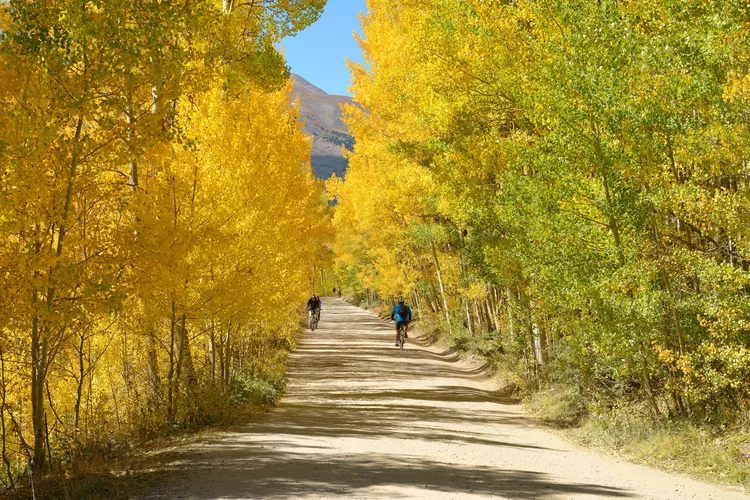Article Summary:
Boreas Pass is a scenic road near Breckenridge, Colorado, previously serving as a railroad pass connecting Leadville and Denver during the historic Colorado Gold Rush. It is now a favored destination for those captivated by breathtaking views, mountain biking, and hiking.
This location in Colorado is renowned for its spectacular fall colors, although it is equally stunning in summer. The road offers wide-ranging vistas of the Tenmile Mountains and the Blue River Valley, ultimately leading you to the Continental Divide.
Stretching 22 miles south of Breckenridge, Boreas Pass was initially named Breckenridge Pass when it opened in the 1860s.
The Details
- Elevation: The pass sits at an impressive 11,493 feet above sea level. Ensure you acclimate to Denver’s altitude before venturing up, as this elevation can lead to altitude sickness if you’re not cautious.
- Location: Situated in the Rocky Mountains on the Continental Divide, just outside Summit County, Boreas Pass can be accessed by taking Colorado 9 south from Breckenridge, where you will notice Boreas Pass Road on your left. This road also connects Breckenridge to Como, Colorado.
- Road conditions: While some segments of the road are paved, it transitions to unpaved towards higher elevations and may be muddy or snowy during the colder months. It typically closes to vehicles in winter (around November 1) until mid to late spring (sometimes until early June). During favorable weather, a regular car can traverse the dry sections. Ample parking is available at the summit. Additionally, once the road is closed for winter, it becomes a cross-country skiing route. Always check road conditions before heading out, as closures may occur due to weather or maintenance.
History of Boreas Pass
The breathtaking scenery of Boreas Pass is complemented by its rich history. Originally a trail connecting mountain towns during the gold rush of the 1800s, it was later widened for stagecoaches and converted into a railroad in 1882. It served as a narrow-gauge railroad until 1938, before opening to vehicles and hikers in the 1950s, taking on its present-day form.
Highlights Along the Way
Today, you can discover historical remnants throughout the area. At the summit, expect to find the historic Section House, boxcars from a former train station, and “Ken’s Cabin,” one of the oldest buildings in Breckenridge. Additionally, you can visit Rocky Point for a restored segment of the railroad track.
Notable highlights include:
- Ghost towns: If you’re intrigued by ghost towns, Boreas Pass is a prime spot, with a service road leading to the ghost town of Dyersville on the north side of the pass.
- The scenery: The majestic views are a key reason travelers flock to Boreas Pass. Expect to see the Blue River Valley, the Tenmile Range, and rich foliage that changes with the seasons.
- Outdoor museum: The outdoors serves as an educational space. An outdoor museum provides insights and great photography opportunities. Look for the Sawmill Museum.
- Washington Mine: Located just off Boreas Pass Road, you can take Illinois Gulch Road to visit the Washington Mine. The Heritage Society even offers guided tours of this former gold mine.
- Mountain biking paths: The area is popular among mountain bikers. The singletrack trails are manageable and suitable for bikers of various skill levels, provided you can handle the altitude.
- Cross-country skiing: During winter, enjoy tranquil cross-country skiing trails, contrasting the bustling ski resorts of Breckenridge.
- Hiking trails: Numerous trails are available, some leading up the Continental Divide for majestic views.
- Campsites: There are a few designated camping areas along the pass, requiring a short hike into the woods for some. The Selkirk Campground is a great, budget-friendly option for a night outdoors.





